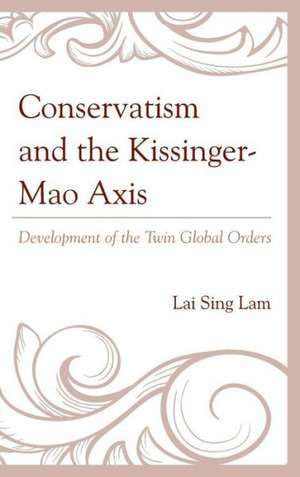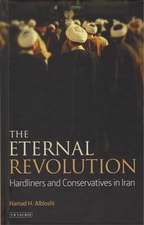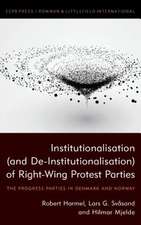Conservatism and the Kissinger Mao Axis
Autor Lam Lai Singen Limba Engleză Hardback – 19 mai 2015
Preț: 671.61 lei
Preț vechi: 920.02 lei
-27% Nou
Puncte Express: 1007
Preț estimativ în valută:
128.53€ • 139.56$ • 107.96£
128.53€ • 139.56$ • 107.96£
Carte tipărită la comandă
Livrare economică 22 aprilie-06 mai
Preluare comenzi: 021 569.72.76
Specificații
ISBN-13: 9781498511391
ISBN-10: 1498511392
Pagini: 236
Ilustrații: black & white illustrations
Dimensiuni: 152 x 229 x 18 mm
Greutate: 0.52 kg
Editura: Rowman & Littlefield
ISBN-10: 1498511392
Pagini: 236
Ilustrații: black & white illustrations
Dimensiuni: 152 x 229 x 18 mm
Greutate: 0.52 kg
Editura: Rowman & Littlefield
Notă biografică
Lai Sing Lam is an independent scholar.
Cuprins
Part I: Background of Kissinger¿s Doctrine of Balance of Power in Action
1The Postwar International Environment: The American-Soviet-Chinese Triangle
Part II: The Kissinger-Mao Axis
2 Conservatism and the Materialization of the Kissinger-Mao Axis
3 The Kissinger-Mao Axis I: The Integration of Kissinger¿s Balance-of-Power and Maös Global Order of Tripolarity: Maös Ping-Pong Diplomacy
4 The Kissinger-Mao Axis II: Maös Modernization Revolution and Deng the Successor
5 The Kissiner-Mao Axis III: The Post-Dengist Economic Development: Deng¿s ¿Good- Neighborly¿ Policy and the Rise of China
Part III: The Volatile Asia Pacific in the New Century
6 The New American Containment of China
Part IV: The Volatile Europe in the New Century
7 The New US-led NATO Containment of the Rising Russia
Part V: The New Global Order of Bipolarity of the 21st Century
8 The SCO and Counter-Containment of the West
Descriere
This book examines the balance-of-power initiative Kissinger inherited, which harmonized with Mao's "three worlds" concept and led to the Kissinger-Mao axis in the new US-Chinese-Soviet global order. The US-Japan containment, NATO's expansion, and Russia's rise from the ashes led to the Sino-Russian-Central Asian collusion via the West.











